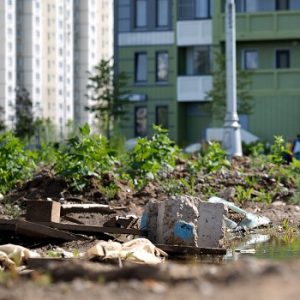
More evidence that low-calorie sweeteners are bad for your health
Studies show that artificial sweeteners can raise the risk of hypertension, metabolic syndrome, type 2 diabetes and heart disease, including stroke.

Natural Health News — Greening vacant urban land significantly reduces feelings of depression and improves overall mental health for the surrounding residents, according to a new study.
The findings have implications for cities across the United States, where 15% percent of land is deemed “vacant” and often blighted or filled with trash and overgrown vegetation.
For the trial, published in JAMA Network Open, 541 vacant lots throughout Philadelphia were randomly assigned to one of three study arms: greening intervention, a trash clean-up intervention, or a control group with no intervention. The greening intervention involved removing trash, grading the land, planting new grass and a small number of trees, installing a low wooden perimeter fence, and regular monthly maintenance. The trash clean-up involved removing trash, limited grass mowing where possible, and regular monthly maintenance. The Pennsylvania Horticultural Society LandCare program performed the greening, trash clean-up, and maintenance.
The researchers then measured the mental health of Philadelphia residents 18 months before and after nearby vacant lots had been converted into green spaces, as well as residents living near untreated abandoned lots, and those that just received trash clean-up. Participants were asked to indicate how often they felt nervous, hopeless, restless, depressed, that everything was an effort, and worthless.
» US researchers studied residents mental health when vacant lots were cleaned up and given a green ‘makeover’.
» When land was cleared and planted with grass and trees local residents experienced a more than 40% decrease in feelings of depression.
» Just clearing the trash from vacant lots did not have any effect suggesting the proximity to green spaces is important for mental health.
Clean, green and happy
They found that people living within a quarter of a mile radius of greened lots had a 41.5% decrease in feelings of depression compared to those who lived near the lots that had not been cleaned and greened. Those living near green lots also experienced a nearly 63% decrease in self-reported poor mental health compared to those living near lots that received no intervention.
Results were most pronounced when looking only at neighbourhoods below the poverty line, with feelings of depression among residents who lived near green lots decreasing significantly – by more than 68%.
The findings add to the growing body of evidence showing how revitalized spaces in blighted urban areas can help improve safety and health, such as reducing crime, violence, and stress levels. The most recent study, from the same team and published in February of this year, found up to a 29% decrease in gun violence near treated lots. This latest work is believed to be the first experimental study to test changes in the mental health of residents after nearby vacant lots were greened.
A positive impact
“Dilapidated and vacant spaces are factors that put residents at an increased risk of depression and stress, and may explain why socioeconomic disparities in mental illness persist,” said lead author Eugenia C. South, MD, MSHP, an assistant professor of Emergency Medicine and a member of the Center for Emergency Care and Policy Research at the University of Pennsylvania. “What these new data show us is that making structural changes, like greening lots, has a positive impact on the health of those living in these neighbourhoods. And that it can be achieved in a cost-effective and scalable way – not only in Philadelphia but in other cities with the same harmful environmental surroundings.”
Interestingly, analyses of the trash clean-up intervention only compared to no intervention showed no significant changes in self-reported mental health.
“The lack of change in these groups is likely because the trash clean-up lots had no additional green space created,” said co-author John MacDonald, PhD, a professor of criminology and sociology at Penn. “The findings support that exposure to more natural environments can be part of restoring mental health, particularly for people living in stressful and chaotic urban environments.”
The study shows that adding green space to neighbourhoods should be considered alongside individual treatments to address mental health problems in low resource communities. Additionally, greening is an affordable approach, costing about $1,600 (£1200) per vacant lot and $180 (£140) per year to maintain. For these reasons, the authors said, vacant lot greening may be an extremely attractive intervention for policy makers seeking to address urban blight and promote health.

Please subscribe me to your newsletter mailing list. I have read the
privacy statement